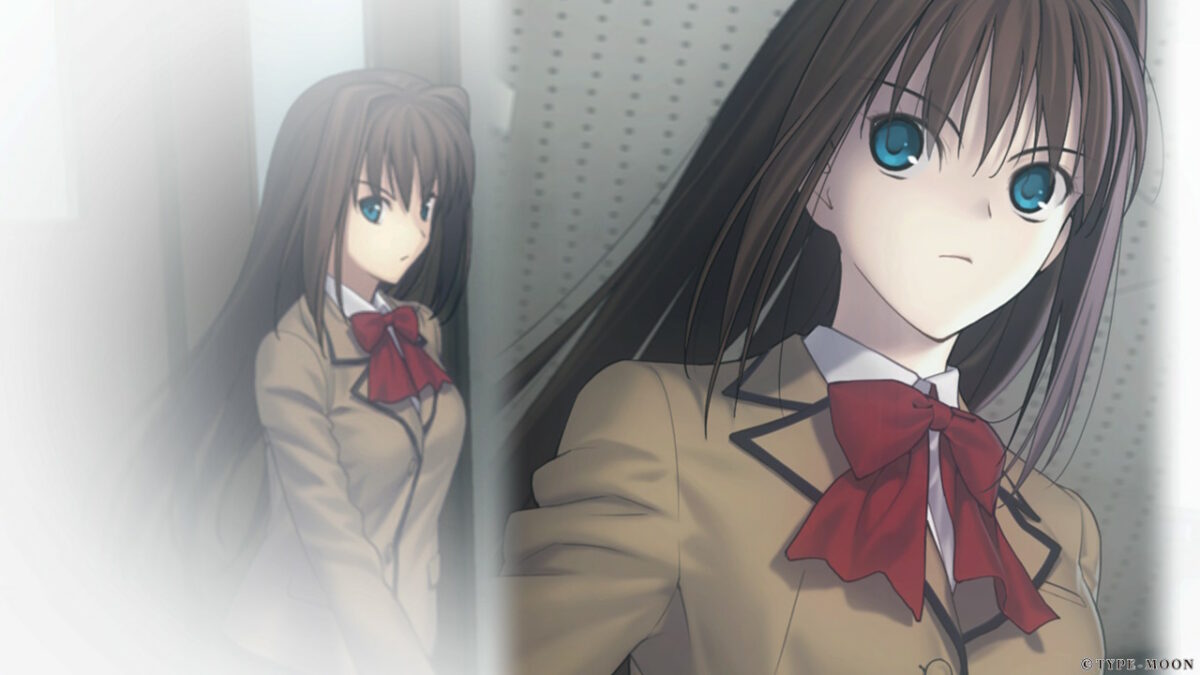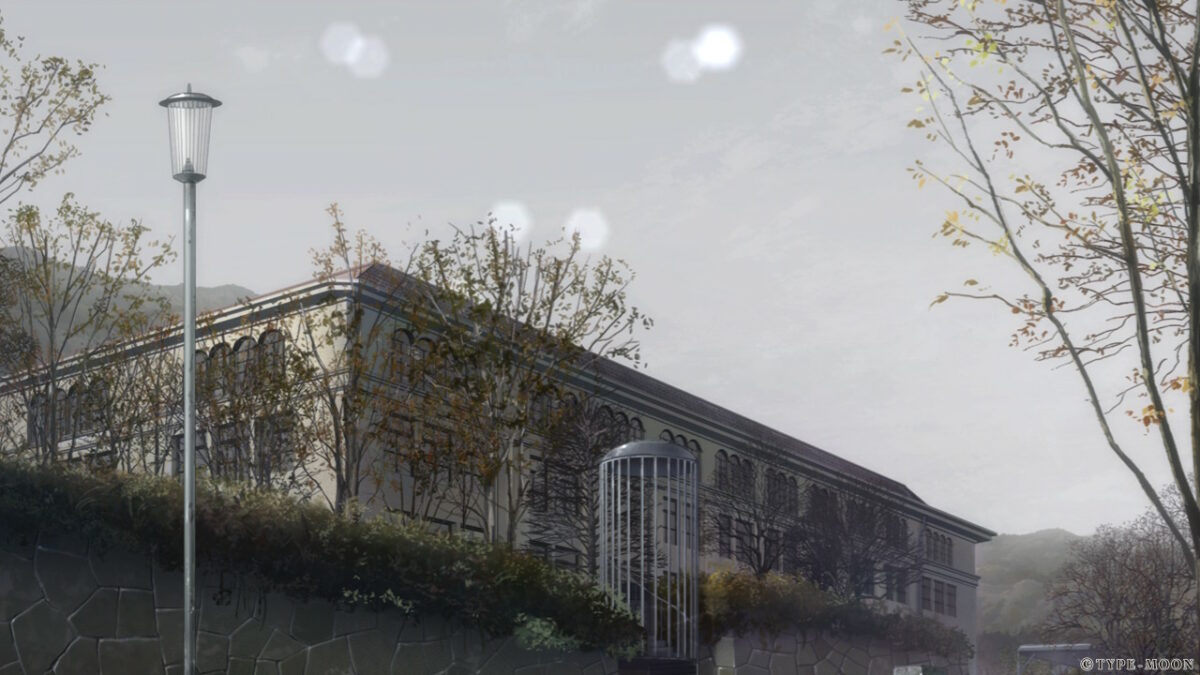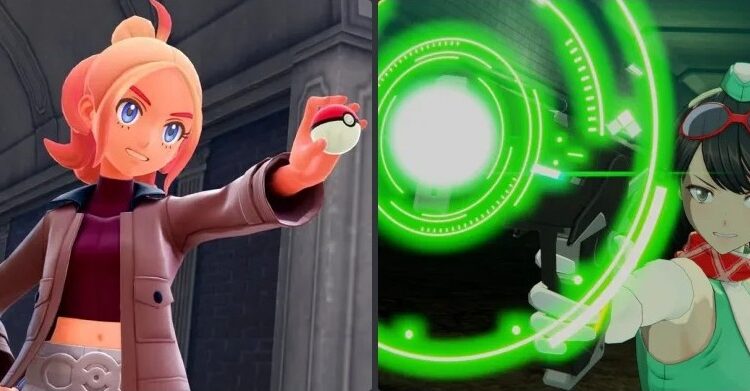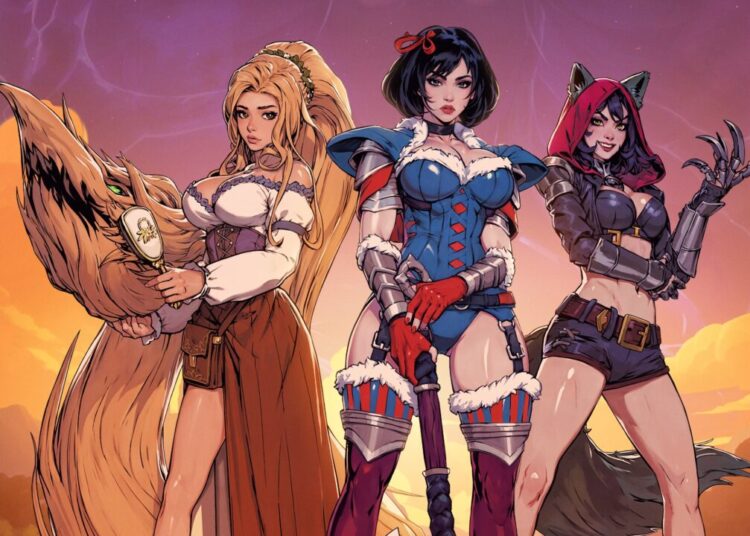After ten agonizing years, Witch on the Holy Night (Mahōtsukai no Yoru), is finally available for western players. Here’s our spoiler-free review.
I was deep into the Nasuverse when this visual novel was first announced. Then I went a few years barely interacting with any Japanese media and was just kinda burned out on it all. My wife and I eventually got into Fate/Grand Order and even watched the Fate/Extra anime, but nothing came close to the first time I discovered Fate/Stay Night and the greater Nasuverse through Fate/Extra on the PSP, a decade ago. Until now, and Witch on the Holy Night.
Originally a traditional novel, this is Kiniko Nasu’s first written work. However, it was not widely released and very few copies of it were ever given out, and then only to close friends.
The English release of Witch on the Holy Night is a momentous occasion for two big reasons:
- This is the first official English release of any Type-Moon visual novel. Most fans today have jumped in either from the incredible anime adaptations by ufotable, or from any of the other countless spinoff media projects. Their willingness to release this version in the west on the same date as the Japanese release shows that this could be the beginning of a new chapter for Type-Moon and the end of their notoriously long streak of leaving their western fans wanting.
- This could blow open the door to fans outside of Japan finally getting their hands on official English translations of Nasu’s numerous other projects that have reached foreign audiences solely through the work of fans. Who knows, maybe even that long-awaited Tsukihime remake will finally hit these shores too.
Now let me tell you, dear reader: Witch on the Holy Night is not a story to miss. If you enjoy Nasu’s other works, this is a must-read. If you have even a passing interest in the Nasuverse or other Type-Moon hits such as Garden of Sinners or the aforementioned Tsukihime and Melty Blood franchise, pick it up. It’s the perfect winter read and feels right at home on the Switch, which is the reviewed version. Due to the nature of the medium and the story, I will refrain from speaking about the story in anything more than generalized terms to avoid spoilers and any videos/photos I use will be from the public demo, or from the first chapter of the story. So with that and the brief history lesson out of the way, let’s begin looking at the title in earnest.

Witch on the Holy Night‘s Plot
Witch on the Holy Night serves as a prequel to Tsukihime, specifically the new remake. Set in 1980, it tells the tale of Aoko Aozaki, the young witch Alice Kuonji, and a clueless boy named Sojyuro Shizuki as their fates intertwine during a magical battle hidden from the rest of the world. Fans of Tsukihime and Melty Blood will no doubt recognize Aoko, as she eventually goes to teach that story’s protagonist, Shiki Tohno, about his mystical abilities. Nasu’s prose flows off the screen to weave a tight mystery and lay the foundations for his engrossing universe, once again reminding fans why his properties became the smash hits they are. This is the work that started Nasu’s universe, and it lives up to the pedigree. I will warn readers though, while the title is more lighthearted than his other works, there’s still some shocking stuff here. The story opens with a gruesome description of animal death while later in the story there’s what I can only vaguely describe as a horror segment, so be warned. It can and does get pretty intense.
Witch on the Holy Night‘s Magical Production Values
Witch on the Holy Night is without a doubt the most visually striking visual novel I have ever read. There’s a level of detail and depth expressed here that is rarely seen in this medium. The incredible animations, illustrations, and colors at play drive home why the original release spent so long in development hell. Battles between characters contain effects that dance around the screen with incredibly framed illustrations. Background CGs contain detailing so exquisite that you could hang them on a wall. Character portraits are varied and expressive. The color palette is near perfection. This updated release brings full voice acting and higher supported resolutions to make the most of the gorgeous art. I hesitate to use the word here, but the cinematography on offer in this release is second to none. I have included a clip from the demo below to show off just what I mean.
#NintendoSwitch pic.twitter.com/wNARZpUQkx
— Quinn (@InputVoid) December 23, 2022
The sound design is no slouch either. Hideyuki Fukasawa, of Street Fighter 4 and Marvel vs Capcom 3 fame, composed some wonderful pieces here from the energetic and upbeat “Five” to the melancholic and mysterious “Imbalance/Blue”, these tracks elevate every scene beyond mere text and PNGs on a screen. Sound effects tie the package together with some incredible auditory ambiance. Even if you stripped out the story, the amount of effort and care present in the visuals and music alone would be nothing short of a work of art. The only negative to all of this is that it comes at a pretty significant storage cost, with the title being nearly 20GB, something almost unheard of for visual novels.
Witch on the Holy Night‘s Bewitching Writing
Witch on the Holy Night has some minor stumbles in its pacing due to the abundance of slice-of-life sections, but I would argue that it’s better than the original Fate/Stay Night in that regard. It’s also worth noting that this is a kinetic novel akin to Higurashi, meaning there’s only one direct path from beginning to end and nothing in the vein of traditional “gameplay”. This doesn’t detract from the experience, it enhances it, allowing a complete focus on the main story instead of fracturing it between different routes. It explains the concepts of its universe well and weaves an enchanting mystery through its 20-30 hour completion time.
My only complaint with the story or the writing is the slower pace of the beginning. But once the story kicks off, it is engrossing on a level that had me wishing it was also available in audiobook so I could continue the story while going about my day. Chapter 5 is a relentless whirlwind of chaos that begs to be finished in one sitting and is home to some wild set pieces that beat even Fate/Zero for jaw-dropping spectacle and tension. It really is that good.

The translation itself is remarkable as well, with a natural flow and vernacular. No stiff and awkward translations here, everything flows naturally and there’s not a hint of referential humor or obtuse internet slang that snuck its way in. That said, I noticed a litany of typos, occasional grammatical errors, and sometimes even missing quotation marks. These can easily rip you out of the story at the worst moment, but it’s nothing a quick patch won’t fix. I even noticed these in the demo, so to see them make it to the full release was disappointing.
Closing the Book
Witch on the Holy Night is a once-in-a-generation release that commands attention. It represents a hopeful step forward for western fans of the original works that made Nasu’s world such a juggernaut in Japan, while being the perfect entry point for newcomers to both visual novels and the Nasuverse. This should be the new standard of presentation for larger-budget visual novels and every tiny gear in this machine locks together seamlessly, creating a work that should not be passed over.
I haven’t been this engrossed in a visual novel since I originally read Saya no Uta nearly a decade ago, and that is one of my favorite pieces of media ever. It rekindled a lost love for this style of storytelling and reminded me why I enjoy reading. Despite the few minor blemishes, Witch on the Holy Night is a perfect end to 2022. It will inevitably get overlooked by many game awards and media outlets, but I anticipate word of mouth to be quite strong for this title, and its sales numbers have done very well so far. I cannot recommend enough to anyone who likes literature, anime, or Nasu’s other works. Read it!
Witch on the Holy Night is now available on Nintendo Switch and PlayStation 4 (fully playable on PS5 with 4K support) for $40 USD digitally, with a $60 USD physical collector’s edition releasing soon.















